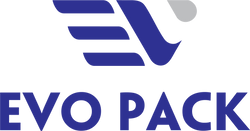Packaging in 2025 is more than just a protective layer—it’s a brand statement, a sustainability commitment, and a key driver of consumer experience. For businesses in F&B, beauty, e-commerce, and retail across Australia, staying ahead of packaging trends is critical to staying competitive.
1. Sustainable & Compostable Materials Are the New Standard
The demand for eco-conscious packaging is only growing stronger. With Australia’s national targets aiming for 100% reusable, recyclable, or compostable packaging by 2025, businesses that continue to use virgin plastics and mixed materials may soon find themselves behind the curve—or non-compliant.
More brands are moving to:
Compostable films and pouches
Recycled paper and cardboard
Bioplastics such as PLA (derived from corn starch)
Glassine and kraft paper for food and dry goods
These materials reduce environmental impact and send a strong message about your brand values—especially to Gen Z and Millennial customers, who are most sustainability-focused.
Key Tip: If you’re in the F&B or cosmetics sector, ensure any compostable or biodegradable packaging is certified for food contact and matches disposal systems available in Australia.
2. Minimalist & Refill-Ready Packaging

Australians are increasingly drawn to simple, clean designs—and not just for aesthetic reasons. Minimalist packaging is typically:
Easier to recycle
Less wasteful
More premium in appearance
This trend includes the rise of refillable formats in beauty and cleaning products, such as glass jars with recyclable pouches or “forever” dispensers paired with concentrate refills.
In e-commerce, brands are shifting to slimline packaging that minimises void space, cutting shipping costs and carbon footprint at the same time.
Pro tip: Keep your design clean, reduce unnecessary layers, and highlight your sustainability credentials directly on pack.
3. Smart Packaging & QR Code Integration
In a digital-first world, consumers expect information at their fingertips. That’s why more Australian brands are adopting smart packaging features like:
QR codes for nutritional info, brand stories or loyalty rewards
Batch tracking and authenticity verification for high-value or consumable items
AR (augmented reality) for immersive storytelling
In e-commerce, QR-linked unboxing experiences can help convert first-time buyers into loyal fans.
This is especially effective for cosmetic and boutique F&B brands—where storytelling, ingredient sourcing, or ethical credentials help build brand loyalty.
Bonus: With upcoming labelling changes, smart packaging can also offer dynamic updates on recyclability and end-of-life options.
4. Functional Design for E-Commerce
As e-commerce continues to boom, packaging has to be sturdy, practical, and brand-driven. This means:
Tamper-evident seals for product security
Frustration-free unboxing that protects and delights
Custom sizing to reduce breakage and shipping waste
Light-weighting to cut delivery costs
But it’s not just about function—beautiful packaging drives shares on social media, creating organic word-of-mouth.
More online brands are embracing two-in-one solutions, such as mailing boxes that double as return kits or gift-like presentations without needing extra wrapping.
If you’re an Aussie brand shipping nationwide or abroad, packaging that performs well under pressure is a must.
5. Transparent Packaging & “Naked” Products
From windowed pouches to clear PET containers, transparency—literally and figuratively—is on trend. Consumers want to see what they’re buying, and trust is built when your packaging shows:
The real product (without excessive wrapping)
Ingredient visibility and freshness
Honest portion sizes
In food, health, and beauty, transparent packaging suggests purity, safety, and quality. Some brands even embrace “naked” packaging, where possible—products wrapped in minimal material or bundled without plastic.
This approach works especially well for local, handmade, or organic products where the product itself is the hero.
6. Local Sourcing & Aussie-Made Packaging
With supply chain disruptions and rising import costs, many Australian brands are looking closer to home for packaging solutions. Locally sourced and produced packaging offers:
Faster turnaround times
Lower freight emissions
Support for Aussie jobs and innovation
Easier regulatory alignment with APCO, ARL and food contact laws
Customers increasingly want to “buy local,” and packaging that is Australian-made can be a major selling point, especially in regional and farmer’s market environments.
Evopack, for instance, works closely with Australian producers and materials suppliers to ensure full transparency and reliability.
7. Customisation & Low-MOQ Printing
Finally, packaging is becoming more personal and agile, thanks to advances in digital printing and short-run production. Whether you’re launching a new product or testing a niche market, small-batch custom packaging allows you to:
Run limited edition designs
Split packaging for seasonal campaigns
Trial new SKUs without overcommitting
Personalise by customer segment or sales channel
This is a huge advantage for emerging e-commerce and DTC brands. You don’t need big budgets or massive runs anymore—just good design and the right packaging partner.
Custom printing on mailer boxes, labels, sleeves and stand-up pouches can make your brand stand out on shelves or doorsteps.
Conclusion: Packaging Is a Growth Strategy in 2025
For Aussie brands across F&B, cosmetics, retail and e-commerce, packaging is no longer just a cost—it’s a direct extension of your brand, your values, and your customer experience.




